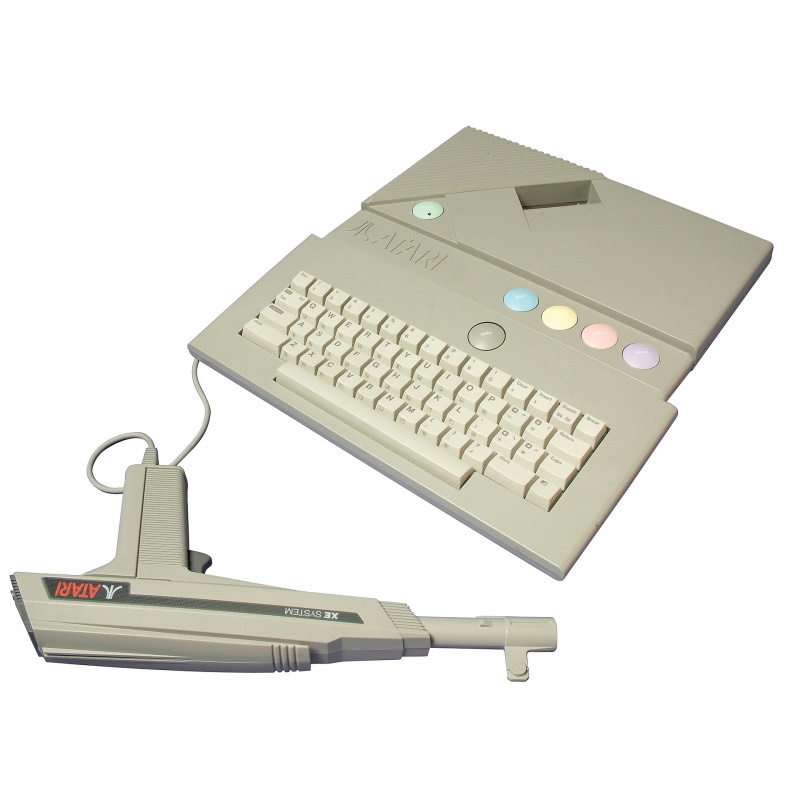|
History
Right after the release of the Atari VCS (2600), Atari started to work on a line of 8-bit computers. The first one, the Atari 400 (codename Candy) was planned as a video game console while the second one, the Atari 800 was supposed to be a high-end computer for the time, based on the same architecture. As this line of computer was designed to address the lack of bitmap graphics and character generator of the Atari VCS, it makes sense to make a “consolized” version of it. In the summer of 1978, a corporate decision was made to focus on the new systems around education. The Candy console was largely completed by this time, and for some time, it remained as a new console project, until in early 1979, the decision was made to “transform” Candy into a low-end computer. Atari chose to dedicate the now named Atari 400 to children, which resulted in the computer we know today, which include a keyboard resistant to liquid spills.
The Atari 8-bit computer line was fairly successful and it was more and more evident that Atari should capitalize on this success for the successor of the Atari 2600. In 1982, in order to compete with the newcomers such as ColecoVision and the old-timer such as Intellivision, Atari released the Atari 5200 which was largely based on their 8-bit computer architecture. Although, this helped lower the development cost, Atari decided not to make the Atari 5200 compatible with the 8-bit computer games line-up. The 5200 was somewhat popular but failed to survive the North American video game crash.
In 2986, after Jack Tramiel purchased Atari Corporation back from Warner Communications, he decided to re-release the next entry in Atari video game console: the Atari 7800 which was previously released in a brief test run in 1984. At the same time, Tramiel wanted to expand the sales of the 8-bit home computer family, but was hesitating between two options. Either lower the price of the 65XE home computers for about $80 or create a new console based on the 65XE hardware to drive more software sale. Retailers were invited to give their opinion and their choice were almost unanimous : we want the new game console.
Release
Release in late 1987, the XEGS is the “consolized” version on the Atari 65XE home computer. Compatible with all the existing range of Atari 8-bit computer software and peripherals, the XEGS managed sold 100,000 units during the Christmas season in 1987. The new console literally flew off the shelves, with not units available anywhere. For years now, the microcomputer and the game consoles segments were competing one with the other, with many consoles adding computer extension to such as the APF Imagination Machine, the Coleco ADAMS and Intellivision Entertainment Computer System. The XEGS, being a real computer, it was bridging the gap between these two market segment, making it easy to transform a console into a computer, for little to no cost.
Demise
Although the XEGS was not doing bad against the competition, none of the Atari’s consoles were doing enough to beat the mastodon that was the Nintendo Entertainment System. By January 1, 1992, Nintendo controlled 80% of the North American market while Atari had 12%. Atari then announced the end of production and support for XEGS to focus on the next generation of gaming console.
Games
The XEGS is compatible with the other Atari 8-bit computer software, which includes more than 600 titles. 32 games that were released under the XEGS banner, but most were already available for the Atari 8-bit computer in diskette formats.

